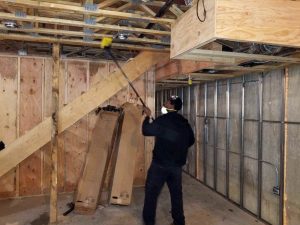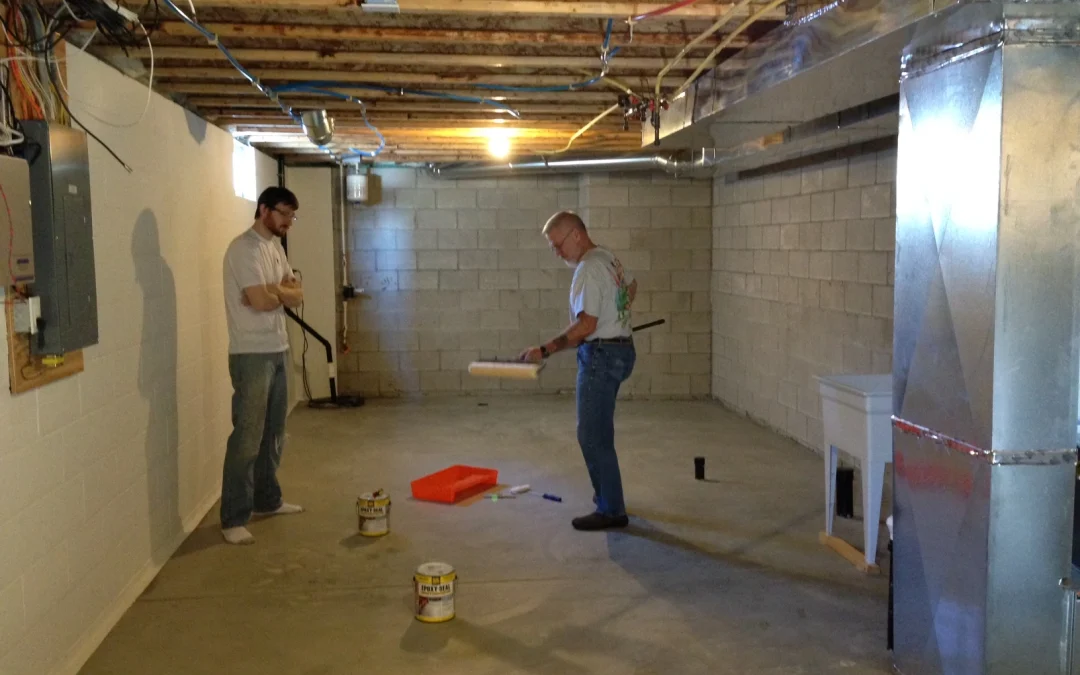Safety Precautions When Cleaning the Basement
Cleaning your basement can be a daunting task, but it’s essential for maintaining a safe and healthy home environment. However, basements often harbor various hazards that can pose risks to your well-being if not addressed properly. In this comprehensive guide, we’ll explore the importance of incorporating safety measures into basement cleaning and identify common hazards to watch out for. By understanding these risks and implementing proactive safety strategies, you can ensure a thorough and secure cleaning process that protects both you and your home.
Understanding Basement Hazards
Basements are susceptible to a variety of hazards that can compromise safety during cleaning. These hazards include mold and mildew growth, water damage, poor ventilation, structural instability, electrical issues, and pest infestations. Understanding the potential risks associated with basement cleaning is the first step in implementing effective safety measures to mitigate these dangers and protect yourself and your property.
Conducting a Safety Assessment
Before beginning the cleaning process, it’s essential to conduct a thorough safety assessment of your basement. Start by inspecting for signs of water damage, mold growth, structural weaknesses, and electrical hazards. Identify any areas that may require repairs or professional attention before proceeding with cleaning activities. Additionally, ensure that the basement is well-ventilated and adequately lit to minimize the risk of accidents and exposure to harmful substances.
Safety Precautions When Cleaning the Basement
Mold and Mildew Removal
Mold and mildew thrive in damp, dark environments, making basements an ideal breeding ground. When cleaning mold-infested areas, it’s crucial to take precautions to prevent exposure to harmful mold spores. Wear appropriate personal protective equipment (PPE), including gloves, masks, and goggles, to protect yourself from inhalation and skin contact. Use EPA-approved mold cleaners and disinfectants to effectively remove mold and prevent its recurrence. Proper ventilation and dehumidification can also help control moisture levels and inhibit mold growth in the future.
Mold and Mildew Removal Methods
- Vinegar: Mix equal parts white vinegar and water in a spray bottle and apply to moldy surfaces. Let it sit for an hour, then scrub with a brush and rinse with water.
- Bleach Solution: Dilute one cup of bleach in one gallon of water and use a sponge or cloth to scrub moldy areas. Allow the solution to sit for 15 minutes, then rinse thoroughly with water.
- Borax: Mix one cup of borax with one gallon of water to create a solution for removing mold and mildew. Apply the solution to affected areas, scrub thoroughly, and rinse with water.
- Hydrogen Peroxide: Use a 3% hydrogen peroxide solution directly on moldy surfaces. Let it sit for 10 minutes before scrubbing and rinsing with water.
- Tea Tree Oil: Mix one teaspoon of tea tree oil with one cup of water in a spray bottle. Spray the solution onto moldy surfaces and let it sit without rinsing to inhibit mold growth.
- Baking Soda: Create a paste by mixing baking soda with water and apply it to moldy surfaces. Scrub gently with a brush and rinse with water.
- Commercial Mold Cleaners: Purchase mold and mildew cleaners from hardware or home improvement stores and follow the manufacturer’s instructions for application and removal.
- Professional Remediation: For severe mold infestations or extensive water damage, consider hiring professional mold remediation services. Professionals have the expertise, equipment, and experience to safely and effectively remove mold and restore the affected area.
By employing these mold and mildew removal methods and taking preventative measures, homeowners can effectively combat mold growth and maintain a clean and healthy basement environment.

Basement Cleaning Safety Precautions
Addressing Water Damage
Basements are prone to water intrusion from various sources, including leaks, floods, and groundwater seepage. Addressing water damage promptly is essential to prevent further deterioration and mold growth. Begin by identifying and repairing the source of the water intrusion, whether it be a leaking pipe, a faulty sump pump, or inadequate drainage. Remove standing water using pumps and dehumidifiers, and thoroughly dry out affected areas to prevent mold and mildew proliferation. Discard any water-damaged materials that cannot be salvaged, such as soaked carpets or cardboard boxes.
Ensuring Structural Stability
Structural integrity is paramount when cleaning basements, especially in older homes or those with foundation issues. Inspect the basement for signs of cracks, bulges, or sagging in the walls, floors, and support beams. Any structural abnormalities should be addressed promptly by a qualified contractor to prevent collapse or further damage. Avoid overloading shelves or storage racks and be mindful of heavy objects that may exacerbate existing structural weaknesses.
Electrical Safety Precautions
Basements often house electrical systems and appliances that can pose electrocution hazards if not handled properly. Before cleaning, ensure that the power to the basement is turned off at the circuit breaker to prevent accidental shocks. Use ground fault circuit interrupters (GFCIs) for electrical outlets to reduce the risk of electrical accidents in wet or damp environments. Inspect electrical cords and appliances for signs of damage or wear, and replace any defective components promptly.
Pest Control Measures
Basements are prime habitats for pests such as rodents, insects, and spiders, which can carry diseases and cause property damage. Take preventive measures to deter pests by sealing cracks and gaps in walls, floors, and foundations. Keep food stored in airtight containers and promptly clean up spills to eliminate food sources for pests. Use traps, baits, or professional pest control services to address infestations safely and effectively.
Proper Waste Disposal
Dispose of cleaning materials, debris, and hazardous waste from the basement in accordance with local regulations and guidelines. Use sturdy trash bags or containers to contain waste and prevent leaks or spills. Avoid mixing household chemicals or dumping them down drains, as this can lead to environmental contamination and pose health risks. Consider recycling or donating items that are still usable to minimize waste and promote sustainability.
Conclusion: Incorporating safety measures into basement cleaning is essential for protecting yourself, your family, and your home from potential hazards. By understanding common basement hazards and taking proactive steps to address them, you can ensure a thorough and secure cleaning process. Remember to conduct a safety assessment, wear appropriate protective gear, address mold and water damage, ensure structural stability, practice electrical safety, implement pest control measures, and dispose of waste responsibly. By prioritizing safety during basement cleaning, you can maintain a healthy and hazard-free living environment for years to come.

